How to meet the online expectations of digital natives is a billion dollar question. Basically, it boils down to a simple formula: give them what they want. What they want is visual communication.
The entire generation, in particular Generation Z born after 2000, is online. One quarter of teens in the U.S. that grew up with technology is “almost constantly” online, while 92% report going online daily. Youth in other countries are quickly picking up too.
They may not be good at handwriting, their brains may be differently wired, but they have a major advantage up their sleeves: they easily exploit the benefits of the Internet while on the move (see also Digital Natives Manifesto).
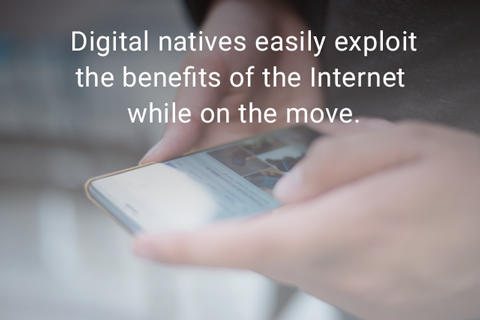
We may call them lazy because they demand almost immediate solutions to their online problems, we may be upset with their fragmented attention spans and impatience, but we have to live with it.
When the global mobile usage exceeded desktop usage in November 2016, digital natives won the first major battle in history. By 2025 they will outnumber the rest of the workforce in the developed countries.
Organisations that manage to tap into this vast potential will make enormous profits in the future. But not only companies. Everyone should be on the lookout.
Take for example governments. They must encourage governments to accommodate to the learning styles of digital natives and find ways to fund very different curricula in the future.
Effective governments of the future must do exactly what they fear the most: they must become proactive and open to emerging communication channels they can’t fully control.
If you find this picture too depressing, consider slowly dying cable TV operators. Online services such as Netflix already control a gigantic share of video market. Why?
Well, digital natives prefer being connected to the web than flicking channels on a TV.
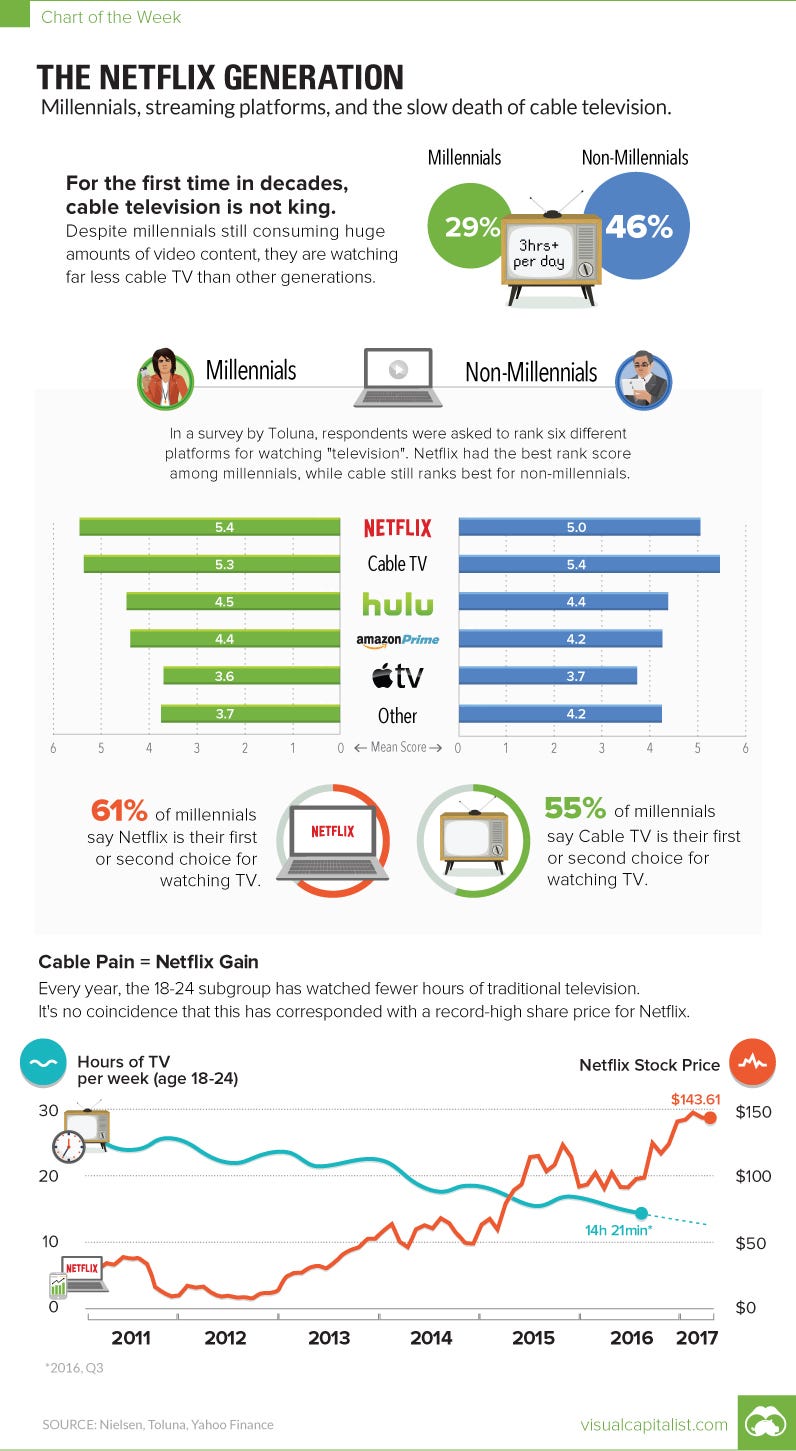
In short, different habits of digital natives, in particular Generation Z. Digital natives prefer digital content, but not any kind of digital content.
To grab their attention you have to offer appealing, yet intuitive products and services. Sadly, that’s easier said than done.
A recent blog post on Google’s Design asks an important question: “How do we build a responsible, effective ecosystem for a world we may not fully understand yet?” Indeed, how can we prepare in time for new content genres we don’t know anything about?
An answer that immediately comes to mind is to better understand the digital natives’ culture. We should be able to grasp changes in digital behaviour and cater for the needs of the future fully digitized world.
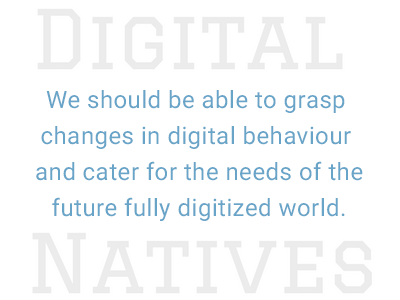
Let’s consider a truly tremendous evolution of web design as an illustration. In the early days, designers focused primarily on textual elements, followed by table-based sites and now obsolete Flash animation (you reckon Gen Z knows about Flash?).
The rise of JavaScript and semantic web led into Web 2.0 and set a stage for the dominance of mobile web.

Web design of the future will be highly customisable and created to engage users in ways we can’t imagine right now.
A few years ago nobody believed that watching eSports (video gaming) would become so immensely popular around the world. Today, eSports is threatening to disturb traditional sports fan base.
Some people love carefully sifting through textual content, but most online users stick to visuals. The vast majority of online users only skim webpage content and rarely read the entire page. The ultimate goal of any webpage is to grab users’ attention while they seek valuable information.
Our brain processes visual content 60,000 times faster than text, but more importantly, visual content communicates emotional messages much more effective. No wonder some of the most popular social networking sites such as Pinterest or Instagram use text only sparingly.
If you know who you’re targeting, you probably know what your audience likes. Are they into entertainment or discovery, staying connected or sharing inspirational ideas?
Your job is make them want to buy what you have to offer, always bearing in mind that people buy products and services because they feel like it. There’s no better instrument to persuade than into buying products than immersive visuals.
Creating attractive visuals is all about quality design. This is even more important with data visualisation.
Imagine being tasked to present a report on survival rate in Europe based on the World Bank data.
The World Bank’s site offers nice interactive maps, but they look a bit outdated. Have a look at the following data presented in three different ways. Which one do you like the most?
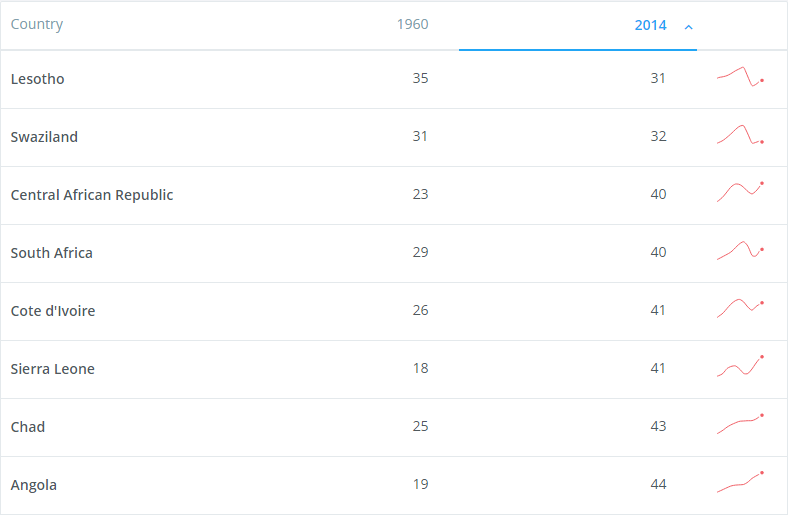
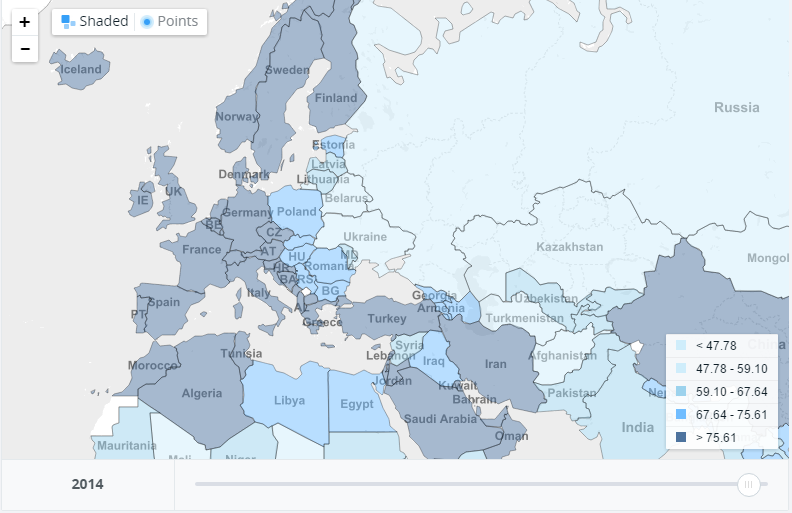
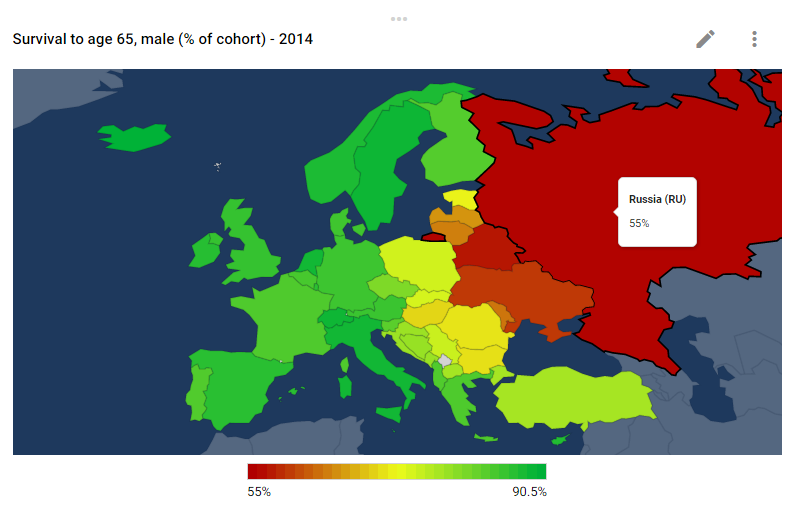
The first table is pretty boring with lines after lines of numbers. The second image is much better, but the third one hits the mark. It’s intuitive and communicates visually of the survival rate in Europe.
You don’t have to be an expert to understand that the Western Europe fares much better than the Central or Eastern Europe.
The whole point is to convey a message in seconds to your audience that doesn’t require expert knowledge. Interested viewers will find a way to drill further beyond your visual representation if they feel like it.
Digital technologies dramatically changed the way our economies function. As a result, content creators must fundamentally reassess the way they market their products.
Dealing with digital natives means encouraging engaging, purposeful and visual communication. With online tools such as Worldoscope that is simple to use even for total beginners, you’ll deliver visuals easy on the eyes. Your audience will love it.